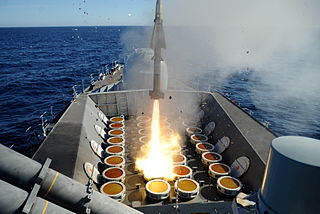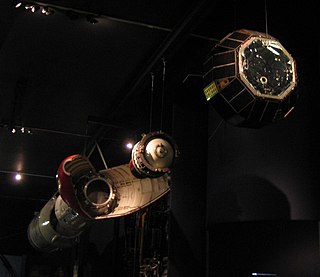Related Research Articles

The Bristol Aeroplane Company, originally the British and Colonial Aeroplane Company, was both one of the first and one of the most important British aviation companies, designing and manufacturing both airframes and aircraft engines. Notable aircraft produced by the company include the 'Boxkite', the Bristol Fighter, the Bulldog, the Blenheim, the Beaufighter, and the Britannia, and much of the preliminary work which led to Concorde was carried out by the company. In 1956 its major operations were split into Bristol Aircraft and Bristol Aero Engines. In 1959, Bristol Aircraft merged with several major British aircraft companies to form the British Aircraft Corporation (BAC) and Bristol Aero Engines merged with Armstrong Siddeley to form Bristol Siddeley.

The British Aircraft Corporation (BAC) was a British aircraft manufacturer formed from the government-pressured merger of English Electric Aviation Ltd., Vickers-Armstrongs (Aircraft), the Bristol Aeroplane Company and Hunting Aircraft in 1960. Bristol, English Electric and Vickers became "parents" of BAC with shareholdings of 20%, 40% and 40% respectively. BAC in turn acquired the share capital of their aviation interests and 70% of Hunting Aircraft several months later.

The Aerobee rocket was one of the United States' most produced and productive sounding rockets. Developed by the Aerojet Corporation, the Aerobee was designed to combine the altitude and launching capability of the V-2 with the cost effectiveness and mass production of the WAC Corporal. More than 1000 Aerobees were launched between 1947 and 1985, returning vast amounts of astronomical, physical, aeronomical, and biomedical data.

Bristol Aerospace is a Canadian aerospace firm located in Winnipeg, Manitoba and is an operating division of Magellan Aerospace. Once part of the Bristol Aeroplane Company, today it is known as Magellan Aerospace, Winnipeg.

Sea Wolf is a naval surface-to-air missile system designed and built by BAC, later to become British Aerospace (BAe) Dynamics, and now MBDA. It is an automated point-defence weapon system designed as a short-range defence against both sea-skimming and high angle anti-ship missiles and aircraft. The Royal Navy has fielded two versions, the GWS-25 Conventionally Launched Sea Wolf (CLSW) and the GWS-26 Vertically Launched Sea Wolf (VLSW) forms. In Royal Navy service Sea Wolf is being replaced by Sea Ceptor.

The Bristol Bloodhound is a British ramjet powered surface-to-air missile developed during the 1950s. It served as the UK's main air defence weapon into the 1990s and was in large-scale service with the Royal Air Force (RAF) and the forces of four other countries.
Armstrong Siddeley was a British engineering group that operated during the first half of the 20th century. It was formed in 1919 and is best known for the production of luxury vehicles and aircraft engines.
Blue Water was a British battlefield nuclear missile of the early 1960s, intended to replace the MGM-5 Corporal, which was becoming obsolete. With roughly the same role and range as Corporal, the solid-fuel Blue Water was far simpler to use and would be significantly easier to support in the field. It was seen as a replacement for Corporal both in the UK as well as other NATO operators, notably Germany and possibly Turkey.

The Hughes AIM-47 Falcon, originally GAR-9, was a very long-range high-performance air-to-air missile that shared the basic design of the earlier AIM-4 Falcon. It was developed in 1958 along with the new Hughes AN/ASG-18 radar fire-control system intended to arm the Mach 3 XF-108 Rapier interceptor aircraft and, after that jet's cancellation, the YF-12A. It was never used operationally, but was a direct predecessor of the AIM-54 Phoenix used on the Grumman F-14 Tomcat.

Bristol Siddeley Engines Ltd (BSEL) was a British aero engine manufacturer. The company was formed in 1959 by a merger of Bristol Aero-Engines Limited and Armstrong Siddeley Motors Limited. In 1961 the company was expanded by the purchase of the de Havilland Engine Company and the engine division of Blackburn Aircraft. Bristol Siddeley was purchased by Rolls-Royce Limited in 1966.
Aerojet was an American rocket and missile propulsion manufacturer based primarily in Rancho Cordova, California, with divisions in Redmond, Washington, Orange and Gainesville in Virginia, and Camden, Arkansas. Aerojet was owned by GenCorp. In 2013, Aerojet was merged by GenCorp with the former Pratt & Whitney Rocketdyne to form Aerojet Rocketdyne.

The Scout family of rockets were American launch vehicles designed to place small satellites into orbit around the Earth. The Scout multistage rocket was the first orbital launch vehicle to be entirely composed of solid fuel stages. It was also the only vehicle of that type until the successful launch of the Japanese Lambda 4S in 1970.

Captain Robert C. Truax (USN) was an American rocket engineer in the United States Navy, and companies such as Aerojet and Truax Engineering, which he founded. Truax was a proponent of low-cost rocket engine and vehicle designs.

The Rocket Propulsion Establishment at Westcott, Buckinghamshire on the site of the former RAF Westcott has made a number of notable contributions in the field of rocket propulsion, including input on the rocket design for the Blue Streak missile and the propulsion systems on Chevaline. It was also known as the Guided Projectiles Establishment and PERME Westcott.

The aerospace industry of the United Kingdom is the second-largest national aerospace industry in the world and the largest in Europe by turnover, with a global market share of 17% in 2019. In 2020, the industry employed 116,000 people.

Waxwing was a British solid rocket motor used for apogee kick as the 3rd (upper) stage of the Black Arrow satellite launch vehicles. It was also known as Black Arrow-3. Waxwing was used to successfully place the Prospero X-3 satellite into low Earth orbit on 28 October 1971, Britain's only satellite launched on an indigenously developed launch vehicle. Before being separated from the Black Arrow launch vehicle, it would be spun on a turntable using six radial 'Imp' solid rocket motors to spin stabilise the satellite. This means that any discrepancy in thrust in any direction would be cancelled out. The Waxwing motor is now out of production.
The Gosling was a British single nozzle wrap around solid rocket booster developed by Bristol Aircraft Co. in the 1950s to act as a booster motor for the 'Red Duster' Bristol Ferranti Bloodhound for the RAF, the Sea Slug for the Royal Navy, and the Thunderbird for the British Army. All three are surface to air missiles. It would burn for between 8 and 12 seconds, providing an average thrust of 103.24kN which would allow the Bloodhound missile to reach Mach 2.2 and a maximum altitude of just over 21 km. It was used until 1968 by the RAAF when it was decommissioned. The Gosling also appear on the High Altitude Density (HAD), Cockatoo Mk1 and Mk2 and Aero High sounding rockets which were designed to conduct experiments in the upper atmosphere until 1975. Some of the early HAD experiments involved tracking an inflatable metal sphere through the atmosphere after the HAD and dropped it in the upper atmosphere. Later experiments would study the wind speed and direction among other atmospheric conditions deduced from 'lithium vapour grenades'. One difference is that as a strap on booster for the Bloodhound, the Gosling used a angled nozzle whereas on the HAD it employed a straight nozzle design.
References
- Notes
- ↑ S. Parsons, Shadow to Shadow, BAJ Coatings Ltd pages 26-27 ISBN 0-9522471-0-0
- ↑ Sleeve Notes issue 35 page 21 published by Rolls-Royce Heritage Trust Sep 2003
- ↑ "Show Guide" (PDF). Flight International. 25: 844. May 1967.
- ↑ S. Parsons =Shadow to Shadow= BAJ Coatings Ltd; page 26
- Bibliography
- Parsons, Stephen (1993), Shadow to shadow : a history of the Bristol Aeroplane Banwell Shadow Factory and Bristol Aerojet 1941-1991, Weston-super-Mare: BAJ Coatings Ltd, ISBN 0-9522471-0-0
- Rowley, R & Ainsley, W (2008), A short history of Bristol's guided weapons and space activities - 1949 to 1986, Filton, Bristol: Bristol Aero Collection, ISBN 978-0-9559057-0-4
- Dudley, R & Johnson, T (2010), Weston and the Aeroplane, Stroud: Amberley Publishing, ISBN 978-184868-221-4
- "Bristol Aerojet aims higher", Flight International, p. 902, 26 May 1966
- 1960s advert